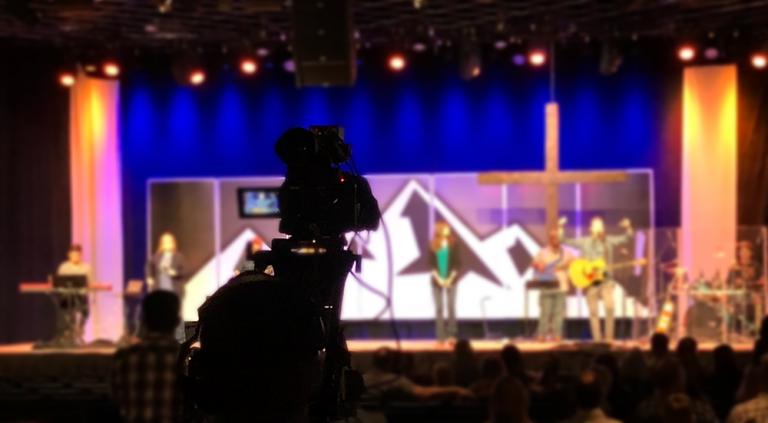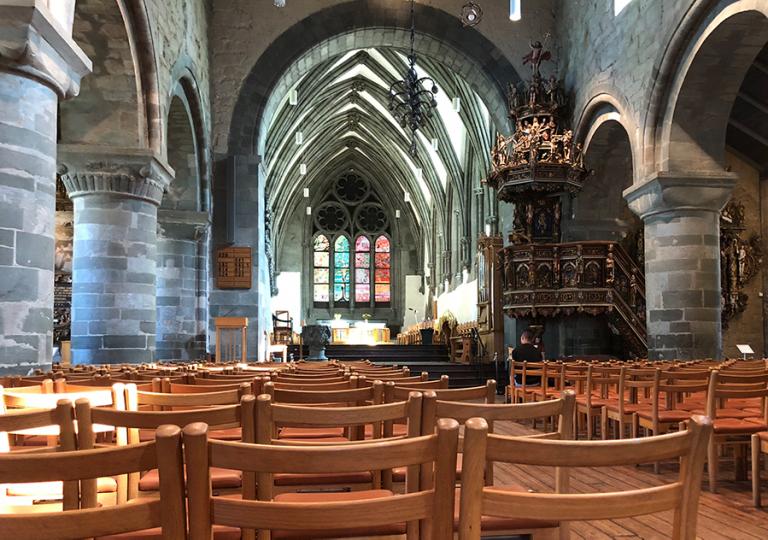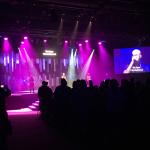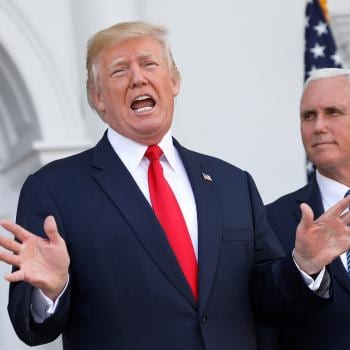
A television studio is a dark, windowless room with professional lighting and sound equipment, a studio audience and cameras. It’s a light-controlled, soundproof environment in which everything is focused on a stage area. Content is tightly managed to fit within an established time parameter.
I worship God in a room like this every week.
Churches used to build sanctuaries. Many had soaring ceilings. Decorations and symbols told the story of the Bible. Natural light poured through windows (both clear and stained glass).

But the worship spaces we build today are dark, cavernous rooms designed to capture sound and images and broadcast them to the world. The studio audience (aka, the congregation) is almost an afterthought.
To understand why our churches now resemble TV studios we must go back to the 1970s.
Radio and TV preachers and televangelists were a big deal in the disco era. Pulpiteers such as Billy Graham, Pat Robertson, Robert Schuller, Jim and Tammy Faye Bakker, and Jerry Falwell reached millions of viewers each week via the airwaves.
Churchgoers began watching and listening to their broadcasts. Predictably, they compared these superstar communicators to their own pastors, who couldn’t possibly measure up.
This created dissatisfaction among churchgoers. For the first time people realized they didn’t have to put up with lousy preaching and mediocre music. They could jump into their big, shiny 1970s cars and drive on brand new, mostly-deserted-on-Sunday-morning freeways across town to sit under the best preacher.
And thus the church-hopping movement began. Big churches got bigger, while smaller churches shriveled.
Add to this the significant number of people who simply stopped going to church and watched it on TV. Televised ministries grew rich off their donations, while small, local churches withered for lack of support.
Church innovators of the 1980s such as Rick Warren, Bill Hybels and Chuck Smith noticed the trend. They invented the “seeker friendly” church model, in part to compete with TV.
From the beginning, seeker friendly worship was designed to capture the TV generation. These churches blacked out the windows, hung professional lights and rolled in the cameras. A rock band warmed up the crowd. Worship services were planned down to the minute. And sermon length increased to give these gifted communicators more pulpit time.
They also eliminated many of the interpersonal elements of worship that would throw things off schedule. Small-church staples such as personal testimonies, prayer-and-share and recognizing visitors were tossed overboard in order to fit everything into the allotted 58 minutes and 30 seconds of broadcast airtime.
In 1970, only about 50 churches in America drew a crowd of more than 2,000 worshippers on a weekend. Today, well over a thousand U.S. congregations regularly eclipse that number. Almost every one of these king-size congregations worships in a room specially built for TV.
YouTube has accelerated the TV-studio-as-sanctuary trend. Pastors can now reach tens of thousands of viewers online. The crowd that actually comes to church plays the role of studio audience for a much larger congregation out in cyberspace.
So, is it wrong for churches to resemble TV studios? Not at all. Jesus didn’t leave behind any church blueprints. He made it clear that where we worship is not nearly as important as how we worship (John 4:20-24).
But…
If our Sunday worship services are made-for-TV, why attend them live? That’s the very question many Christians are beginning to ask.
You see, almost everything we do in our worship services today can be recorded and distributed online. That’s presenting a huge problem, which I’ll examine in my next post.












